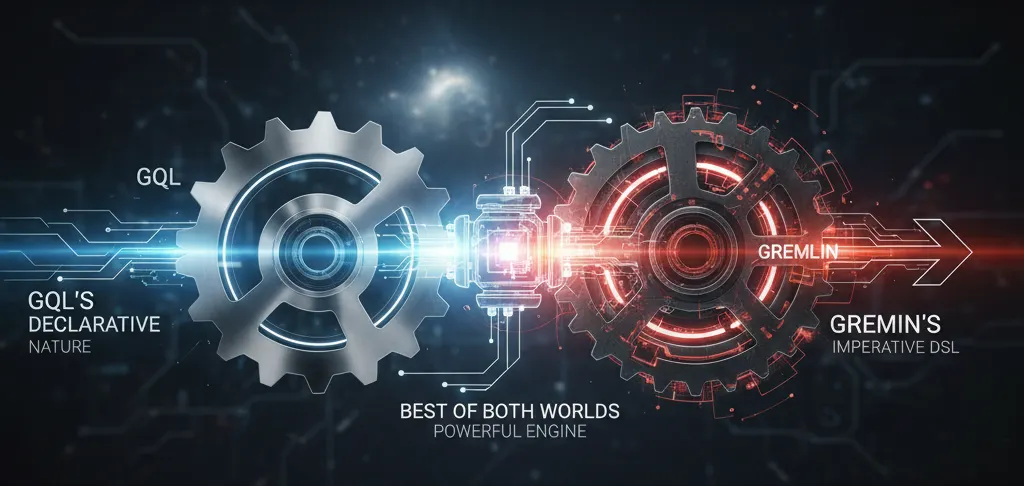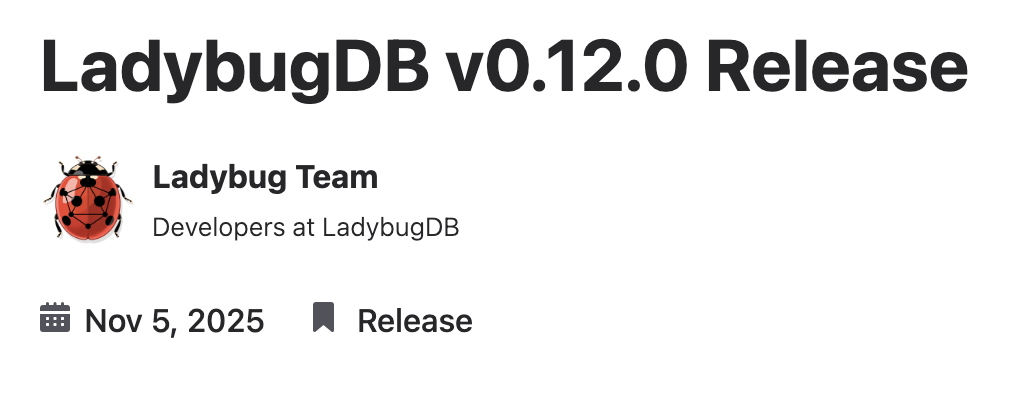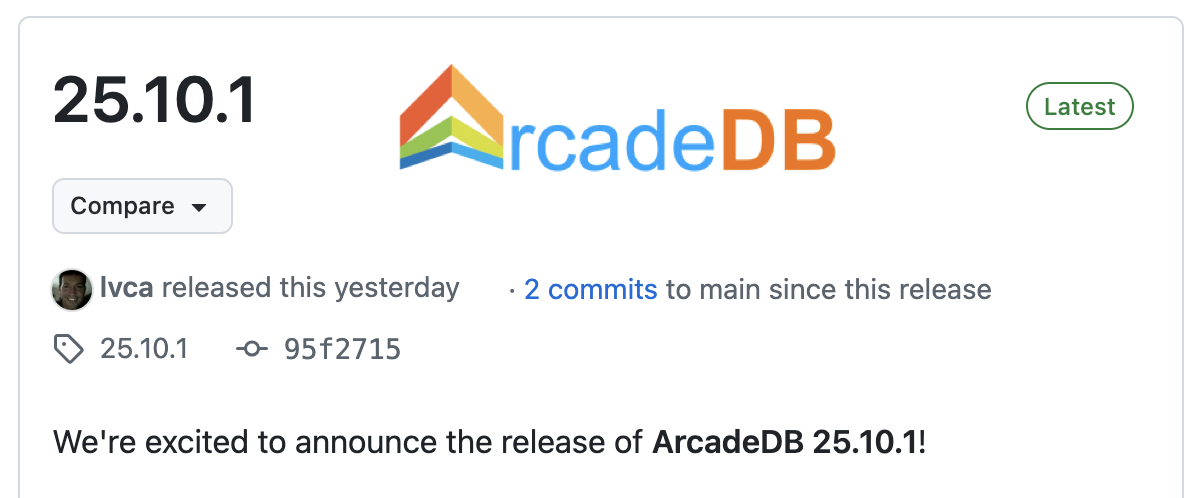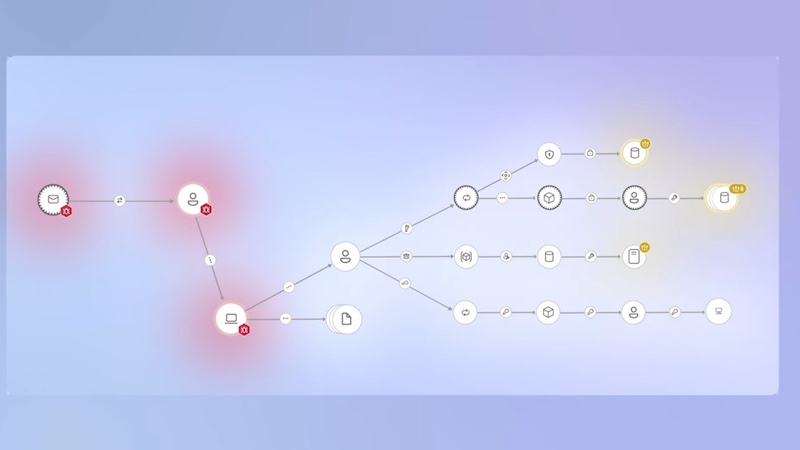The Weekly Edge: New Gremlin Contributor, 2 Graph Releases, Ontologies in Aura, & More [7 November 2025]
![The Weekly Edge: New Gremlin Contributor, 2 Graph Releases, Ontologies in Aura, & More [7 November 2025] The Weekly Edge: New Gremlin Contributor, 2 Graph Releases, Ontologies in Aura, & More [7 November 2025]](https://gdotv.com/wp-content/uploads/2025/11/youtrackdb-ladybug-arcadedb-neo4j-aura-weekly-edge-7-november-2025.png)
It’s not easy being the world’s #1 source for graph tech news, reads, releases, and deep cuts, but here at the Weekly Edge, we manage just fine.
The crushing burden of graph fame? The G.V() team just shrugs it off. The only thing we’re not good at is modesty, because we’re great at it. 💅
Here’s your tl;dr of this week’s graph tech news and hits:
- 👹 A new Gremlin joins the TinkerPop gang: YouTrackDB eschews GQL
- 💡 Your ideas wanted: The KGC 2026 Call for Speakers is open
- 🐞 LadybugDB makes its first post-Kuzu debut
- 🤠 The Indiana Jones of Graph Databases talks agents, Aura & ontologies
- 🐍 ArcadeDB joins the embedded graph database club (and more)
- 🔐 Microsoft gives you the 101 on graphs in cybersecurity
Let’s take a closer look.
[News:] YouTrackDB Asks: To Gremlin or Not to Gremlin
Wake up, babe, a new object-oriented graph database just dropped. A year ago, previous Lead Engineer at OrientDB, Andrii Lomakin, forked the now-sunsetted graph database into a new project: YouTrackDB. Today, YouTrackDB is being supported and developed by JetBrains and is used internally in production. Check it out on GitHub here.
This week, Lomakin and team announced that YouTrackDB won’t be adopting ISO Graph Query Language (GQL) but will instead invest – and contribute to – Apache TinkerPop™’s Gremlin query language instead. But it’s not a same-old take: the YouTrackDB team wants to bring the best of Gremlin and GQL together into a common query language. Worth a read and a think.
[IRL:] Share Your Graph Knowledge at KGC 2026
If you don’t know about the Knowledge Graph Conference, then you must be new here. This vendor-neutral, week-long bonanza is where multiple graph dimensions all overlap: RDF and LPG, neural and symbolic AI, industry and academia, and even buzzwords vs. real-world solutions. It’s a crossroads of the graph tech space happening next on May 4-8, 2026.
More importantly, the KGC team just opened up their Call for Speakers. This is your opportunity to showcase your expertise on graph technology, ontologies, LLMs, taxonomies, graph data science, and more. Here at G.V(), we’re big fans of the Knowledge Graph Conference, so if you have something to contribute to the graph space, then don’t hold back: submit your speaker proposal today! (And if you just want to attend and learn, early-bird tickets are still available.)
[Release:] LadybugDB Takes Its First Flight
It’s hard to imagine, but it’s been less than a month since the death of Kuzu. Meanwhile, the graph community has been busy developing and maintaining a number of forks of the popular embedded graph database, including LadybugDB among others.
On Wednesday, LadybugDB announced its first post-Kuzu release, which mostly focused on providing continuity for Kuzu users and ensuring contributors retain copyright on their own works (see the release notes for more). Led by Arun Sharma, the Ladybug project emphasizes object storage and a product roadmap guided by an open source community – rather than a corporate overlord. All our best on the first release!
[Watch:] Supercharging Neo4j Aura Agents with Ontologies
Each month, my former Neo4j colleagues Alex Erdl and Dr. Jesús Barrasa (the Indiana Jones of Graph Databases) sit down to talk about semantics, knowledge graphs, ontologies, and AI. Each episode of their video podcast Going Meta dissects a new angle or approach on how the worlds of ontologies and graph databases overlap – and the amazing things you can build using both frameworks.
This month’s episode showcases Neo4j Aura Agents, an early-access feature recently announced by the Neo4j team. Together, Erdl and Barrasa build a knowledge graph, overlay an ontology, and then create an agent in Neo4j AuraDB. All of their code, notes, and datasets can be found here on the show’s GitHub repo.
[Release:] ArcadeDB v25.10.1 Delivers Python Bindings & More
Great news for ArcadeDB fans: The GA release of ArcadeDB v25.10.1 dropped earlier this week, and it’s full of features, fixes, and upgrades. First up is official Python bindings for embedded use. As the ghost of Kuzu reminds us often, the industry has a strong appetite for embedded graph use cases, and now Python developers can run ArcadeDB in embedded mode directly within Python applications.
This release also delivers significant query and indexing enhancements, particularly for LIST data types, along with a solid round of bug fixes to improve stability, SQL/Cypher compatibility, and core performance.
Led by long-time graph veteran Luca Garulli, ArcadeDB is a fork of OrientDB that supports key-value, document, search engine, vector, time-series, and graph data models all in one.
[Read:] Security Graphs 101: The Foundation of Modern Cybersecurity
One of the best parts of the graph community is that we’re always open and friendly to newcomers. A great example of that welcoming attitude this week was this beginner’s introduction to security graphs by Shawn Bice at Microsoft. It’s a great 101 rundown on graph basics and how they apply to cybersecurity. After all, if attackers think in graphs, why shouldn’t defenders do the same? (A topic my colleague Amber Lennox has also covered in-depth.)
With the announcement of Microsoft Sentinel graph earlier this quarter, it’s clear that more and more of the cybersecurity space is recognizing the inherent value of a graph approach. And we’ll be here to welcome them in as they do.
P.S. Are you attending Connected Data London this year? Ping me if you’d like to attend the invite-only GraphGeeks after party (I mean “mixer”).
Got something you want to nominate for inclusion in a future edition of the Weekly Edge? Ping us on on X | Bluesky | LinkedIn or email weeklyedge@gdotv.com.





![The Weekly Edge: Dgraph Lives, RyuGraph Rises, Gephi Lite & More [31 October 2025] The Weekly Edge: Dgraph Lives, RyuGraph Rises, Gephi Lite & More [31 October 2025]](https://gdotv.com/wp-content/uploads/2025/10/ryugraph-dgraph-gephi-weekly-edge-31-october-2025.png)
![The Weekly Edge: Kuzu Forks, DuckDB Goes Graph, Cypher 25 & More [24 October 2025] The Weekly Edge: Kuzu Forks, DuckDB Goes Graph, Cypher 25 & More [24 October 2025]](https://gdotv.com/wp-content/uploads/2025/10/ladybug-graph-database-duckdb-cypher-weekly-edge-24-october-2025.png)
![The Weekly Edge: Adieu Kuzu, State of the Graph, NetworkX on Neptune Analytics, & More [17 October 2025] The Weekly Edge: Adieu Kuzu, State of the Graph, NetworkX on Neptune Analytics, & More [17 October 2025]](https://gdotv.com/wp-content/uploads/2025/10/kuzu-archived-networkx-neptune-analytics-weekly-edge-17-october-2025.png)